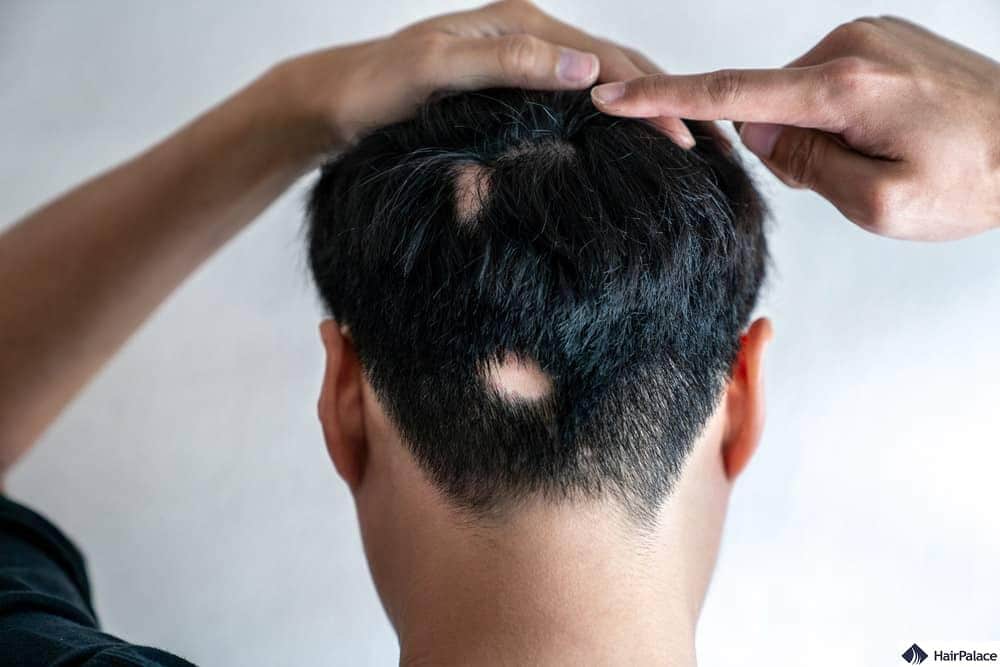Alopecia Areata: Causes, Symptoms, and Treatment Options for Patchy Hair Loss
Noticing sudden bald patches on the scalp can be alarming. One of the most common causes of this type of hair loss is Alopecia Areata, an autoimmune condition that affects millions of people worldwide. Unlike general hair thinning, this condition is characterized by round, smooth patches of baldness, which can appear overnight. In this article, we’ll explore what Alopecia Areata is, its causes, common symptoms, treatment options, and practical tips for managing the condition.

What Is Alopecia Areata?
Alopecia Areata is an autoimmune disorder in which the body’s immune system mistakenly attacks healthy hair follicles. As a result, the follicles shrink and stop producing hair, leading to bald spots. These patches are usually round or oval, with clearly defined edges, and can range from the size of a coin to larger areas of the scalp.
While the scalp is the most commonly affected area, hair loss can also occur on the beard, eyebrows, eyelashes, or other parts of the body.
Common Symptoms of Alopecia Areata
The main symptom of Alopecia Areata is sudden hair loss in small patches. These bald spots often develop within days or weeks. Key characteristics include:
-
Round or oval patches of baldness with smooth skin.
-
No redness, scaling, or scarring, which distinguishes it from fungal infections.
-
In some cases, exclamation mark hairs (short, broken hairs thinner at the base) can be seen at the edges of bald patches.
-
Hair may regrow in one area while falling out in another.
For some people, the condition remains mild and limited, while others may experience more widespread hair loss.

Causes and Risk Factors
The exact cause of Alopecia Areata is not fully understood, but research points to a combination of genetics, immune system activity, and environmental triggers.
1. Autoimmune Response
The immune system mistakenly identifies hair follicles as harmful and attacks them. This disrupts the hair growth cycle, pushing follicles into a resting phase.
2. Genetic Factors
People with a family history of autoimmune disorders (such as thyroid disease, type 1 diabetes, or vitiligo) have a higher risk of developing Alopecia Areata.
3. Stress and Lifestyle
While stress alone does not cause the condition, it can trigger flare-ups or worsen existing hair loss.
4. Other Risk Factors
-
Age: It can occur at any age but often begins in childhood or adolescence.
-
Gender: Both men and women are equally affected.
-
Co-existing autoimmune conditions: Lupus, psoriasis, and rheumatoid arthritis may increase risk.
Types of Alopecia Areata
The severity of the condition varies from person to person. The main types include:
-
Patchy Alopecia Areata: The most common form, with isolated bald patches.
-
Alopecia Totalis: Complete loss of scalp hair.
-
Alopecia Universalis: Complete loss of hair on the scalp, face, and body.
-
Diffuse Alopecia Areata: Sudden thinning across the entire scalp.
-
Ophiasis: Hair loss that forms a band around the sides and lower back of the scalp.
Diagnosis
A dermatologist usually diagnoses Alopecia Areata through:
-
Visual examination of the scalp and bald patches.
-
Dermatoscopy, which helps check for exclamation mark hairs.
-
Blood tests, to rule out other autoimmune conditions or thyroid issues.
Treatment Options for Alopecia Areata
Although there is no permanent cure for Alopecia Areata, various treatments can help stimulate hair regrowth and manage symptoms.
1. Corticosteroid Injections
-
Delivered directly into bald patches.
-
Suppresses the immune response and promotes regrowth.
-
Usually shows results within a few months.
2. Topical Treatments
-
Minoxidil (Rogaine): Applied twice daily, helps stimulate follicles.
-
Topical corticosteroids: Reduce inflammation around follicles.
-
Anthralin: Alters immune activity in affected areas.
3. Oral Medications
-
Corticosteroid pills may be prescribed for widespread hair loss.
-
Emerging treatments like JAK inhibitors (tofacitinib, ruxolitinib) show promise in clinical trials.
4. Immunotherapy
-
Topical immunotherapy (such as diphencyprone, DPCP) is used for severe cases.
-
Works by triggering a mild allergic reaction that distracts the immune system.
5. Alternative and Supportive Treatments
-
Nutritional support: Iron, vitamin D, zinc, and biotin may help overall hair health.
-
Stress reduction: Yoga, meditation, and therapy may reduce flare-ups.
-
Wigs, scarves, or cosmetic solutions for confidence and daily comfort.
Living with Alopecia Areata
Alopecia Areata is not life-threatening, but it can deeply affect self-esteem and mental health. Many people struggle with anxiety, depression, or social withdrawal due to visible hair loss. Support groups, counseling, and connecting with others who share the same condition can help improve emotional well-being.
It’s also important to remember that:
-
Hair loss does not always mean permanent baldness.
-
In many cases, hair regrows naturally within 6–12 months.
-
Even if hair regrows, relapses may occur.
Prevention and Self-Care Tips
Since the condition is autoimmune-related, there is no guaranteed way to prevent it. However, healthy lifestyle choices can support overall wellness and possibly reduce flare-ups:
-
Maintain a balanced diet rich in vitamins and minerals.
-
Manage stress through meditation, exercise, or hobbies.
-
Protect the scalp from sunburn or cold with hats or sunscreen.
-
Avoid harsh chemical treatments that may damage hair follicles.
Conclusion
Alopecia Areata is a challenging condition that causes patchy hair loss due to an autoimmune response. While it may seem distressing, many treatment options exist to help stimulate regrowth and manage symptoms. With medical guidance, supportive care, and lifestyle adjustments, individuals with Alopecia Areata can live confidently and maintain healthy scalp care.
If you notice sudden bald patches, consulting a dermatologist is the first step toward proper diagnosis and treatment. Early management often leads to better results and peace of mind.


